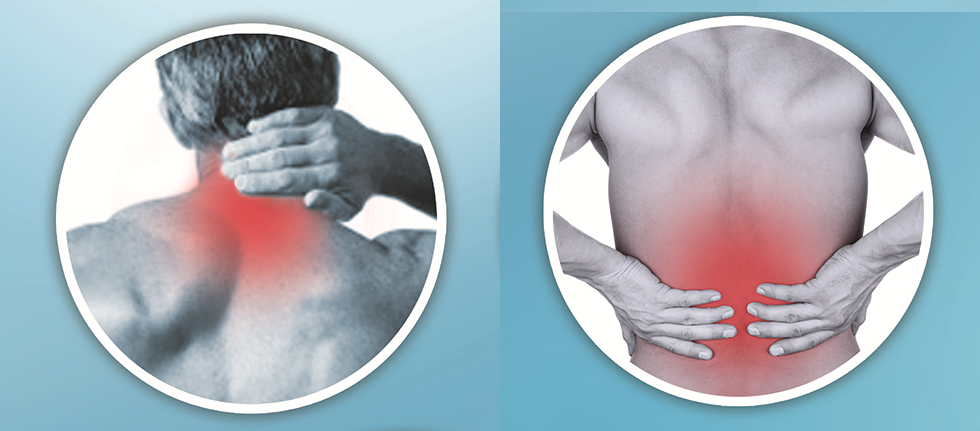Have you heard about the term ‘Musicians Injuries’? Well, strange as it may sound musicians are prone to a lot of injuries. Injuries vary depending on the instrument they play and how they play it. String instruments are prone to injuries on the back, shoulders, and neck, while percussionists often complain of back, shoulder, neck, hand, wrist, fingers and arm pain and tension.
Thanks to studies and discoveries by researchers, scientists, and doctors, a lot of literature is available for maintaining good posture for piano players, drummers, and guitarists.It is essential that every musician maintains a good posture. Having a good posture enables the player to comfortably practice or perform longer, without experiencing aches or causing injuries. A player with good posture can play in a relaxed manner, which grants greater control and hence a greater quality of sound produced.
A professional pianist makes a full-time job out of practicing in front of a keyboard every day. In that way, IT professionals have a lot in common with pianists.
IT professionals typically spend over forty hours a week sitting in a chair in front of their laptops, desktops. Yet they hardly know how to position their bodies for this task. It’s, therefore no wonder that many IT professionals develop chronic back pain because of poor ergonomics.
Along with bad posture, there are many other reasons for it including- degeneration of bones and weakness of muscles due to lack of any exercise. Fortunately, corrective actions can be taken with proper precautions, exercises, and nutrition. All you need is the determination to follow this diligently. This blog takes the help of Dr.PVS Murthy renowned spine surgeon from Hyderabad who has listed a few simple exercises for a pain-free office workout. Please note the exercises here focus on muscular back pain, which accounts for seventy-five percent of clinical diagnoses and is the source of pain for most IT professionals. We won’t address pain derived from injury or spinal damage or any other serious medical condition.
Simple Back Exercises
Cat-Back
Dr. Murthy recommends beginning each routine with the cat-back exercise. This is intended to reduce spine viscosity. It is a warm-up for your back.
To perform the cat back, you must get on all fours so that your weight is on your hands and knees. Then arch your back like a cat — drop your head as though you are looking toward your belly button. Next, reverse the movement by lowering your back so it forms the letter U. As you do this, raise your butt and head—you should look straight forward. It is especially important that you perform this exercise slowly. Repeat five to eight times.
Double Heel Slide
Dr.Murthy recommends following the cat-back exercise with a few hip-and-knee-mobility exercises. For this, we’ll start with the double heel slide. Lie down on your back with your knees bent, your feet flat on the ground, and your arms at your side. Slowly extend both feet so that your legs are fully extended and on the ground. Then bring your feet back to the starting position and repeat the exercise five to ten times.
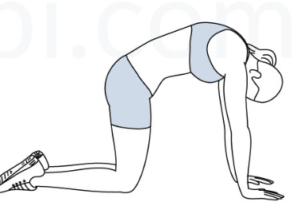
Single-Knee Flex
The next hip-and-knee-mobility exercise is the single-knee flex. Remain on your back in the same position and inhale as you raise your right knee back toward your chest. When it is as far back as it can go, exhale and slowly return your leg to the bent position. When your foot reaches the ground, slide it down so that your leg straightens. Then raise your knee again. Do this five to ten times with the right leg and then five to ten times with the left leg.
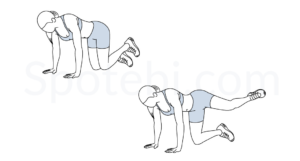
Side Bridge
The next exercise is the side bridge. To perform the side bridge, lie on your side and prop up your body with your elbow and knees. Hold this position for seven to eight seconds while continuing to breathe and repeat four or five times for each side. You should not try to increase the difficulty by increasing the duration of the exercise. Instead, increase the number of repetitions as necessary.
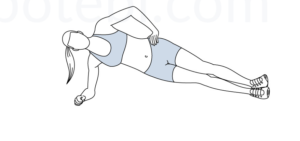
Shoulder Bridge
Another of Dr. Murthy’s favorite exercises for back health is the shoulder bridge. Back pain often causes people to use their hamstring muscles instead of their gluteal (butt) to extend the hip. The shoulder bridge, which forces you to squeeze the gluteal muscles without using the hamstrings, helps establish gluteal dominance during hip extension.
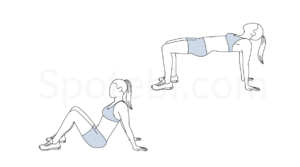
To perform the exercise, lie on your back again, with your knees bent and your feet flat on the floor. Then push your hips up so that your torso is flat, and squeeze your buttocks to provide support. Hold this position for five to ten seconds and then return to the starting position. Repeat the exercise five to ten times.
Dr.Murthy advocates these exercises routinely to professionals who have to sit in front of the computer for long hours. Dr.PVS.Murthy is an acclaimed spine surgeon from Hyderabad and is a partner at my-healthconnect. He has treated over 6000+ patients so far and is available for online consultation on our platform my-healthconnect. If you’d like to consult and reach out to Dr.PVS Murthy, fill the form here.
Check out this video as he speaks about the specialties he caters to.
To hear more from such renowned doctors subscribe at our facebook page. Stay fit, stay healthy.
Image Courtesy: https://www.spotebi.com/exercise-guide

